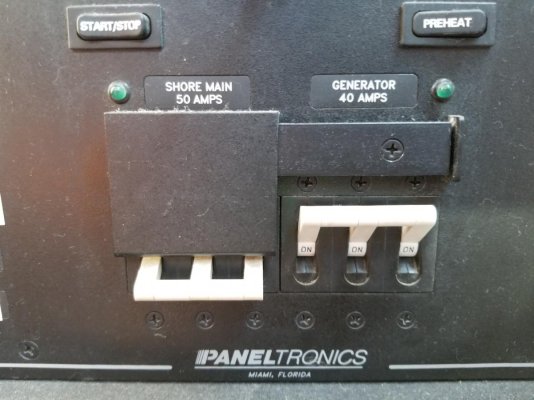yamabuki
Veteran Member
Our boat has a switch for shore power and one for ships power and I plan to connect both the generator output and the inverter output to the ships power switch, when the generator is running then the inverter will not be operating but when the generator is turned off then the inverter will turn on automatically and send ac to the ships power circuit. My question is will the generator be damaged by the inverter sending out 120 v on the same circuit as the generator which will not be running.

